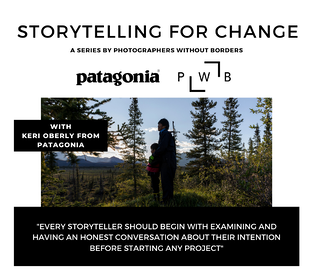With a fiercely competitive market, marketers everywhere are wondering how to make their brands stand out? Niche marketing strategy might be the answer they’re looking for.
Discover what a niche marketing strategy is, how to develop one, and examples of these strategies in action from popular brands.
Developing a Niche Marketing Strategy
1. Know your competition.
Developing a niche marketing strategy is impossible without scoping out your competition.
That’s because it’s crucial to understand your unique selling proposition — what you do that makes customers choose your company over another.
Maybe you design ceramic dishware that can’t be found anywhere else, or maybe you’ve developed a tool that makes it easier for marketers to send emails.
Whatever is it, find your specialty and craft a story around it.
2. Narrow down your niche market.
Airbnb co-founder Brian Chesky is famous for saying, “Build something 100 people love, not something 1 million people kind of like.”
Put simply, it’s better to reach a small group of people who sing praises about your company, rather than a large group who thinks it’s just okay.
You can do this by honing in on the right niche market for your business. While this takes time and thought, it’s worth the effort to find loyal customers who will gladly choose you over competitors.
For instance, Thirdlove is the first underwear company to offer bras in half-size cups. Through its inclusive sizing options and emphasis on body diversity, they’ve built a loyal community of over 327,000 Instagram followers.
3. Go where your buyers are.
If your ideal customer spends all of their time scrolling on Facebook, it wouldn’t make sense to develop a niche marketing strategy around email campaigns.
This is where the value of market research comes in.
You already know who your buyers are, but research helps you go deeper to find out where they shop, how they find products, and what influences their purchase decisions.
Once you have that information, you’ll get the most return for your marketing dollars.
4. Listen to the word on the street.
Everyone has problems that need solutions.
If you listen to people’s thoughts about a certain product or service, you can find opportunities to fill in the gaps.
David Barnett did just that when he engineered a solution for constantly tangled headphones. What started out as two buttons glued to the back of a phone case quickly turned into Popsockets, a company that brought in $169 million in revenue just seven years after its founding.
5. Create a unique brand.
Once you’ve defined your unique selling point, outlined your buyer persona, found out where to reach them, and listened to their problems — all that’s left is to build a brand identity.
A well-defined brand will help you develop a niche marketing strategy that’s authentic to you and attracts ideal customers.
For instance, Etsy’s position as the marketplace for independent artists has attracted more than 138 million buyers.
In a 2020 TV commercial, the brand touched on the pandemic and used emotional marketing tactics to encourage support for small businesses that sell through the platform.
8 Niche Marketing Strategy Examples
1. Malenki Shoes
Malenki Shoes was born after its founder noticed a gap in the market for fashionable shoes for petite women.
This company empowers petite women with fun, stylish heels and sandals instead of being limited to children’s flats at their local shoe store.
As a niche brand, Malenki Shoes has leveraged the power of influencer marketing to raise its brand awareness.
By partnering with influencers showcasing petite fashion brands, they not only benefit from the credibility of those influencers but also reach wider audiences.
2. TomboyX
Despite all the progress made surrounding gender fluidity, finding gender-neutral clothing clothes is still difficult for many.
This is the problem TomboyX’s founders aimed to solve and the niche market they entered by creating a gender-inclusive clothing brand.
The brand caters to all, with products ranging from compression tops and soft bras to biker shorts and swim trunks.
As part of its marketing strategy, TomboyX created a #TomboyTuesday content series, in which they interview self-identified tomboys about their lives and journeys toward self-love.
Former pastry chef. ✅
Makes TikToks on her days off. ✅
Recently sold her house to travel the world. ✅
Coolest Newfie we’ve ever met. ✅Get to know Jennifer Cross.
We guarantee there’s no one else like her. https://t.co/BkjsCFXbgK #TomboyTuesday pic.twitter.com/Nzsoce5Cdm— TomboyX (@tomboyx)
July 12, 2022
This strategy allows the brand to highlight community members, create content that resonates with its audience, and further grow its brand.
3. DryBar
A few years ago, traditional salons offered women packages – usually a wash, blowdry, haircut, and iron – a lengthy process that could have you at the salon for several hours.
Then came DryBar, which offered one service: blowouts. This niche service changed how consumers viewed a salon experience.
How did they spread the word? One way was through its simple yet effective tagline: “No cuts. No color. Just blowouts.”
This simple tagline allowed consumers to understand quickly what DryBar was about and what it offered. From there, their brand awareness grew considerably, earning them news coverage all over the U.S.
4. Flylow Gear
With 9.2 million skiers and snowboarders in the U.S, the pool of potential customers seems wide enough for all to share.
But popular brands like Patagonia and The North Face can be found in almost every sports shop, making it hard to convince customers to seek out smaller brands with fewer offerings.
Flylow Gear figured out how to fight through the noise. Instead of targeting all customers interested in winter gear, their niche marketing strategy focuses on backcountry skiers looking for no-nonsense, quality gear.
Their products are featured in all the right places — like Powder magazine — to reach their ideal buyers. Even their confirmation emails share that they’re a small, mountain-based crew of dedicated skiers.

5. Octavia Elizabeth Jewelry
For ethically-minded consumers searching for jewelry, the most important factor is knowing about raw materials sourcing and product creation.
That’s because this $300 billion dollar industry has come under fire for using child labor and causing extensive environmental harm.
Octavia Elizabeth understands the need for responsible jewelry. The company’s commitment to fair working conditions, legitimate living wages, and ethical production is clearly stated on its website.
Not only has Octavia Elizabeth honed in on customers looking for sustainably-sourced, handmade jewelry who are willing to pay a higher price, but the brand has also elevated its niche offering by associating itself with celebrity clientele.
6. Natural Dog Company
According to a Statista study, Americans spent over $123 billion on their pets in 2021 alone.
So how can a pet-focused business stand out amongst the thousands of memory foam beds, custom carry-on bags, and dog-friendly ice creams saturating the market?

Natural Dog Company caters to a very specific kind of pet owner: the eco-conscious consumer who pampers their pooch.
By giving their organic and all-natural skin care products names like PAWdicure Pack and offering discount codes for free dog treats, they put pups first — which is exactly what their customers do.
7. Pimsleur
Learning a new language can be a struggle, and the options for doing so are definitely overwhelming. Will you really be speaking like a Parisian after spending $1,000 on a program?
Rather than making promises of perfect grammar and flawless accents, Pimsleur focuses on conversational skills.
To promote its product, Pimsleur works with polyglot influencers who can vouch for its efficacy for learning new languages.
Through its affiliate marketing program, it can reach new consumers regularly and gain customers.
8. Photographers Without Borders
It’s one thing to entice people to buy a product, but it’s another thing entirely to attract donors to a nonprofit.
While this type of organization may not seem like the right fit for a niche marketing strategy, it’s essential for bringing in donations and volunteers.

Photographers Without Borders has partnered with major organizations like Adobe, Sony, and Patagonia by honing in on a particular marketing technique: storytelling.
By prioritizing ethical storytelling, whether in a social media post, email newsletter, or online webinar, the organization has built a reputation for producing high-quality work that addresses the 17 UN Sustainable Development Goals and UNDRIP.
Plus, their Code of Ethics makes it clear what type of community members and partners they’re aiming to attract.
Creating a niche marketing strategy that drives growth for your business is more than creating a social media ad or sending a weekly email promotion.
If you take the time to learn about your customers and differentiate your brand, you can develop a strategy that attracts the right buyers and helps you hit your growth goals.
![]()



